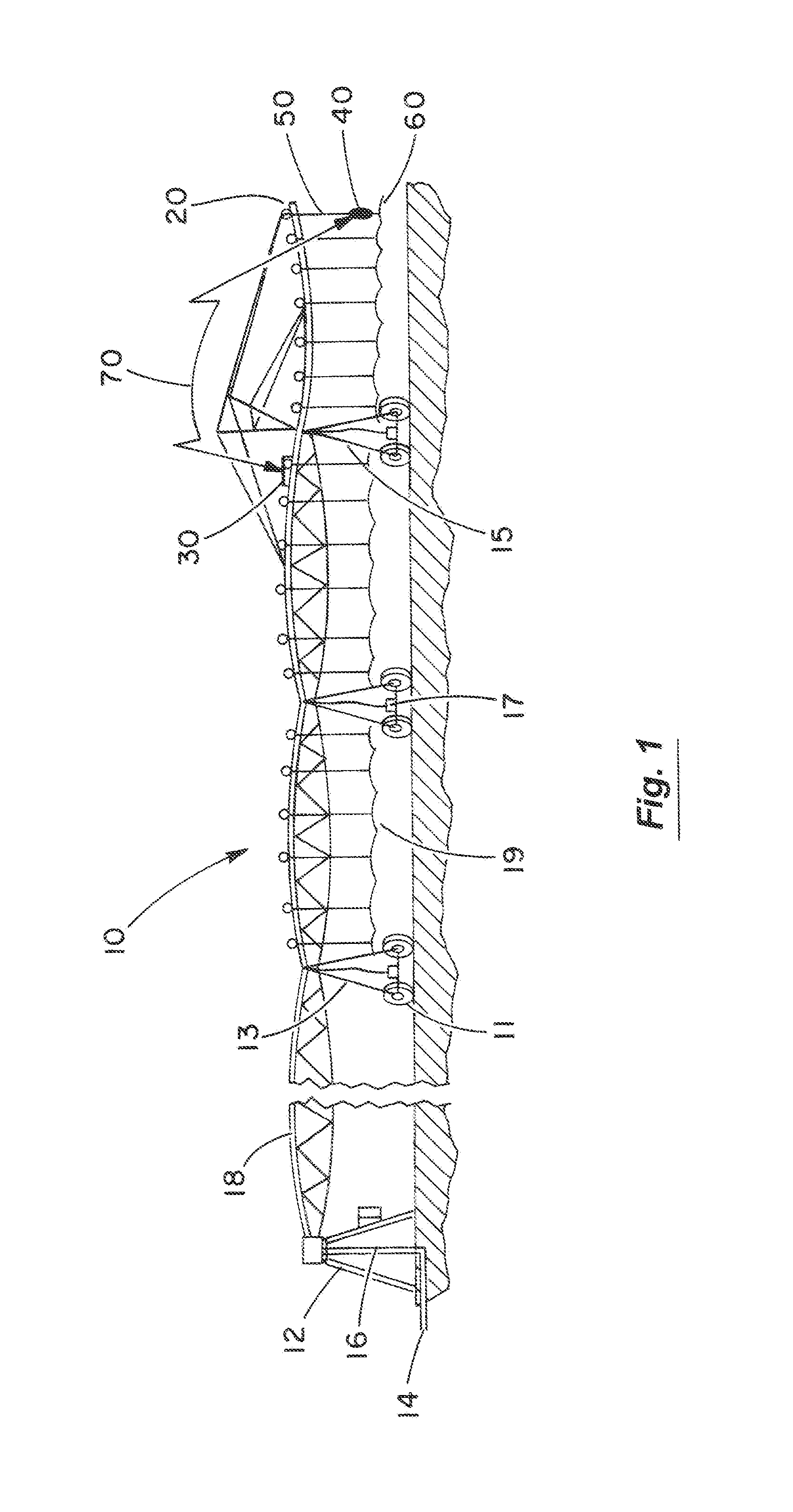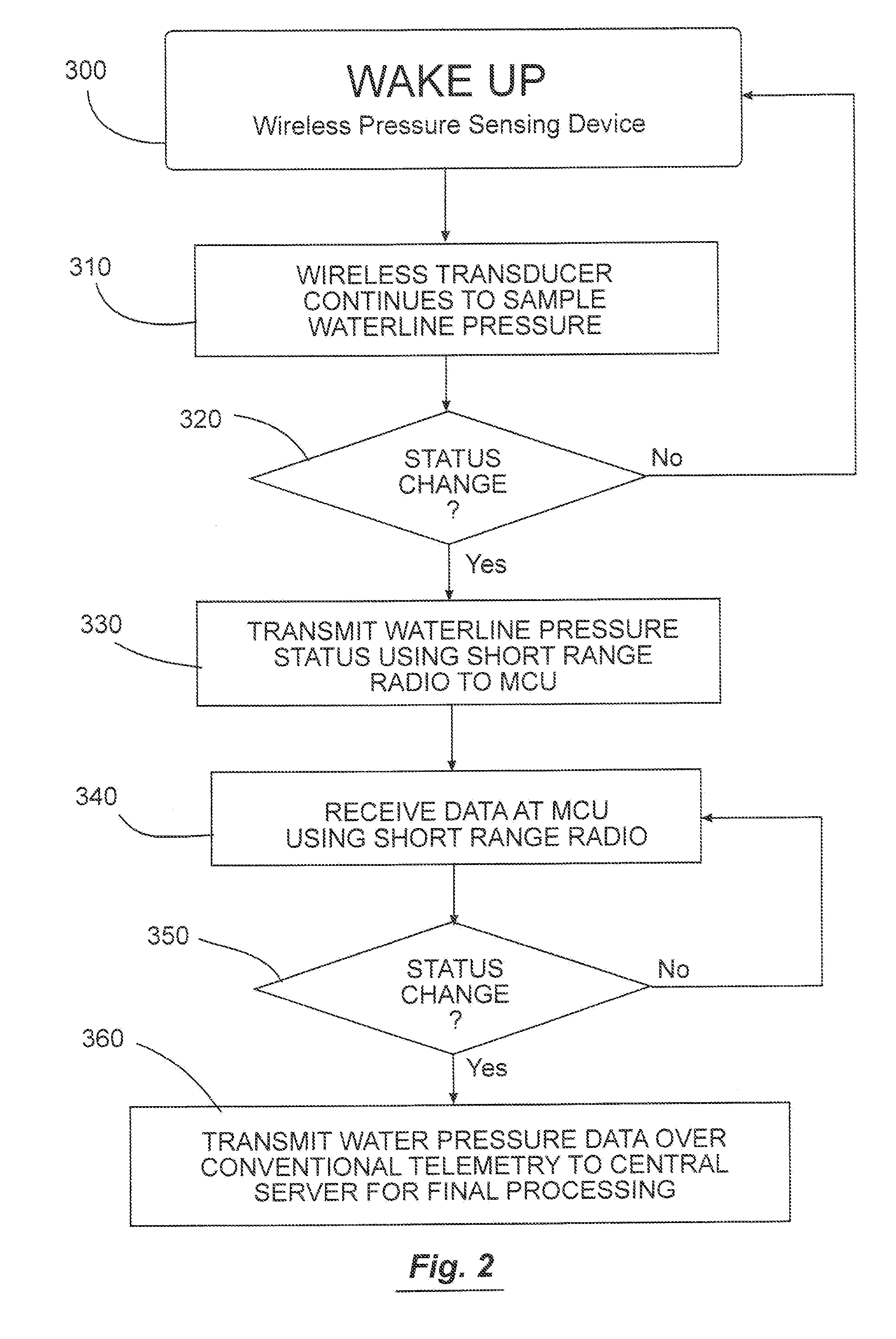Wireless waterline pressure sensor system for self-propelled irrigation systems
a self-propelled irrigation and sensor system technology, applied in the field of self-propelled irrigation systems, can solve the problems of limited monitoring of pressure at such alternative sites, inconvenient installation, and insufficient location of line-of-site telemetry of short-range radios, and achieve the effects of convenient inclusion of short-range radios, adequate power, and scarce and expensive labor
- Summary
- Abstract
- Description
- Claims
- Application Information
AI Technical Summary
Benefits of technology
Problems solved by technology
Method used
Image
Examples
Embodiment Construction
[0042]FIG. 1 is an overview pictorial diagram showing a center pivot irrigation system having a master control unit 30 (MCU) positioned on an outer-most drive tower 15 of a pivot span 18 and having a waterline pressure sensing device 40 located on an outer-most sprinkler nozzle 60 for the purpose of monitoring waterline pressure 16 and using a wireless radio path 70 to communicate between the waterline pressure sensing device 40 and the MCU 30. The invention includes an MCU 30 equipped with a short-range radio 33 (shown in FIG. 3) that communicates locally to a short-range radio 43 (shown in FIG. 4) that is housed in the enclosure of the wireless pressure sensing device 40. Xbee brand radios (commercially available from Digi International of Minnetonka, Minn.) or equivalents are suitable for this purpose. The MCU 30 also includes long-range radio 31 (shown in FIG. 3) for two-way communication with terrestrial or satellite networks.
[0043]FIG. 1 details the mechanized irrigation syste...
PUM
 Login to View More
Login to View More Abstract
Description
Claims
Application Information
 Login to View More
Login to View More - R&D
- Intellectual Property
- Life Sciences
- Materials
- Tech Scout
- Unparalleled Data Quality
- Higher Quality Content
- 60% Fewer Hallucinations
Browse by: Latest US Patents, China's latest patents, Technical Efficacy Thesaurus, Application Domain, Technology Topic, Popular Technical Reports.
© 2025 PatSnap. All rights reserved.Legal|Privacy policy|Modern Slavery Act Transparency Statement|Sitemap|About US| Contact US: help@patsnap.com



